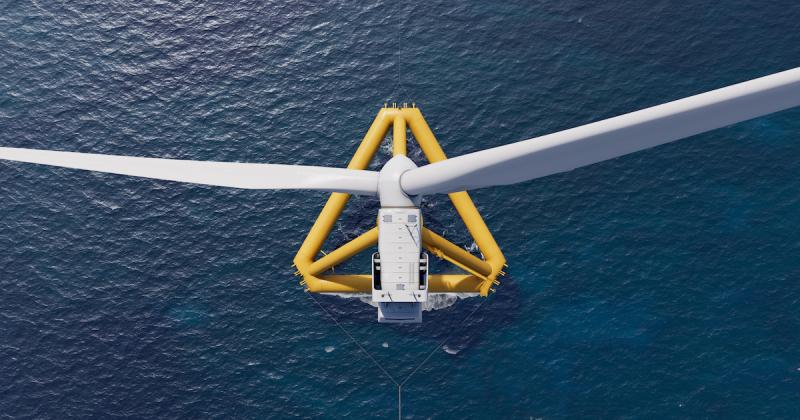The United States. Delivering net zero by 2050 and the role floating offshore wind will play - Marine Power Systems

The Biden administration has committed the United States to becoming net zero by 2050.
The list of things to do is long. From transitioning over 600,000 government owned vehicles and making 300,000 federally owned buildings net zero by 2045 to delivering 30GW of offshore wind by 2030. Last year wind energy accounted for more than 9% of total domestic US electricity generation and it will play a significant role in achieving President Biden’s goals to reach 100% clean electricity by 2035.
However, about two thirds of the offshore wind potential in the US exists in waters that are hundreds or thousands of feet deep – too deep for ‘fixed bottom’ wind turbine foundations. If this resource potential can be realised it could amount to 2.8 terawatts of potential power – which is more than double the current consumption of electricity in the US. Realising that potential will undoubtedly drive down the cost of energy delivered through floating offshore wind.
The offshore wind energy pipeline has already grown to over 35GW, considering those projects from areas where the right to lease has not yet been auctioned upwards. It is expected that California will target 3GW by 2030 and 10GW by 2040 with nearby Oregon creating a roadmap for 3GW by 2030.
That’s a great start and within the last month the U.S Bureau of Ocean Energy Management (BOEM) announced the first-ever floating offshore wind lease sale to be held in early December, 2022. This underlines the country’s commitment to supporting commercial scale floating offshore wind development. A number of European energy developers have already expressed an interest in this lease sale.
With the growing number of offshore wind leases being offered in the United States, the Offshore Wind American Manufacturing Act is set to boost domestic manufacturing through an investment tax credit and a production tax credit for qualified offshore wind components and dedicated offshore wind vessels. The kind of industrial scale developments that will be required to meet US capacity targets mean farm developments will need to be delivered extremely quickly.
Marine Power Systems recognised the need to support local content delivery and importance of providing a solution that maximises access to local ports without the need for specialist vessels and equipment early in the design process of its flexible floating offshore wind platform, PelaFlex.
The modular nature of our technology and structurally efficient tetrahedral design means our floating platform has only ten primary steel components and four distinct parts. It has been designed to be manufactured and rapidly assembled by existing supply chain. The platform’s low mass reduces quayside requirements, including load bearing capacity and storage needs, and the shallow draught system removes the need for expensive dredging. Multiple launch options support a distributed port model for faster industrial scale deployments and reduce specific port requirements.
The tension legged platform design delivers a high degree of system stability, minimal seabed footprint and zero tilt, reducing the wear and tear on the turbine and maximising energy yields and is wind turbine technology agnostic. This makes it an excellent choice for US farm developers who are looking to deliver rapid industrial scale deployments in deep water.

